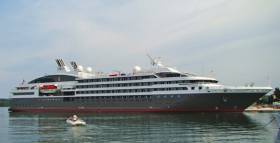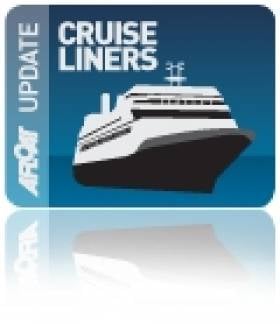Displaying items by tag: L'Austral
Luxury Mega-Yacht Is Galway's First Cruise Call Of 2016
#CruiseLiners - Galway welcomed its first cruise liner call of 2016 last weekend in the shape of the 'luxury mega-yacht' L'Austral, as the Connacht Tribune reports.
Though the vessel only stopped for a day, its 400 passengers and crew made the most of their visit, with sightseeing in the city and a tours to the Burren Kylemore Abbey among their options.
L'Austral's subsequent port of call is Cobh this Sunday (15 May), while Galway's next visitor is as soon as tomorrow (Saturday 14 May) when the Azores calls on the City of the Tribes.
That's one of six remaining cruise calls for Galway in the 2016 season, with Bremen on 11 June, Astor on 10 July, the Pacific Princess and Albatross on 2 and 8 August respectively, and the Prinsendam on 2 September all set to follow.
French Mega-Yacht Cruiseship Bound for Dublin Debut
Le Boréal was to make her maiden Irish call to Cobh but the capital which was also scheduled for the 10 May will instead take this honour from the one-year old ship which is operated by France's only cruise operator, Compagnie du Ponant.
The 142m long ship was built by the Italian Fincantieri shipyard won the 'Best New ship of the Year 2010' by the European Cruiser Association. She can take 264 guests in an interior which has a distinctly French flair from the hand of designer Jean-Philippe Nuel. A crew of 139 look after the running of the six-decked vessel which has 132 luxurious appointed cabins.
Late last month Le Boréal was joined by her new sister L'Austral which was inaugurated into service during a fireworks display off the company's headquarters in Marseille. Both ships made a cruise to the Frioul Islands and famous Chateau d'If and later that day their Le Levant also took part in the celebrations when the trio returned off Marseille.
The other two vessels of the five-strong fleet are the Le Ponant, a three-masted 88m sailing ship and Le Diamant (also due Dublin and Cork this season) form a fleet of bijou cruiseships which are small in size and as such can access remote and exclusive ports of call.
Compagnie du Ponant was established in 1988 and is owned by the CMA CGM Group, the world's third largest container shipping group. The company is an integral part of French maritime heritage with origins from the renowned Compagnie Générale Transatlantique French Line.

























































